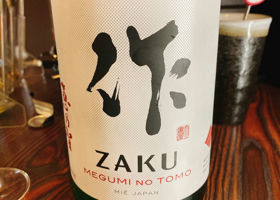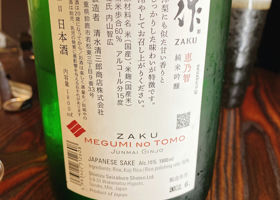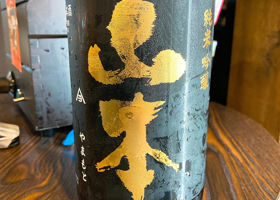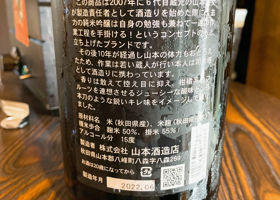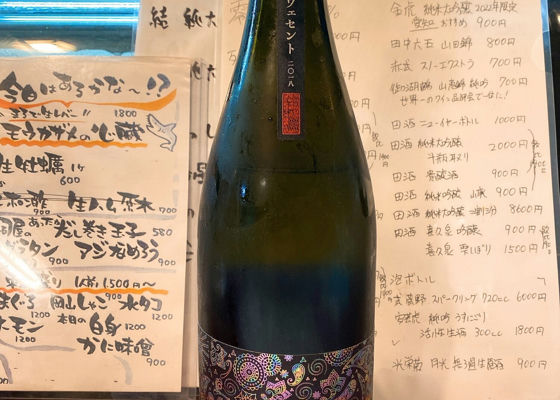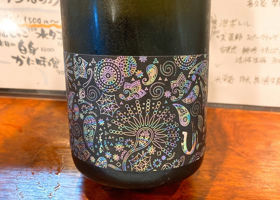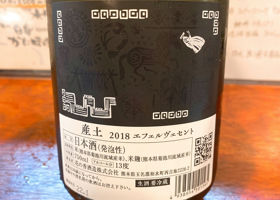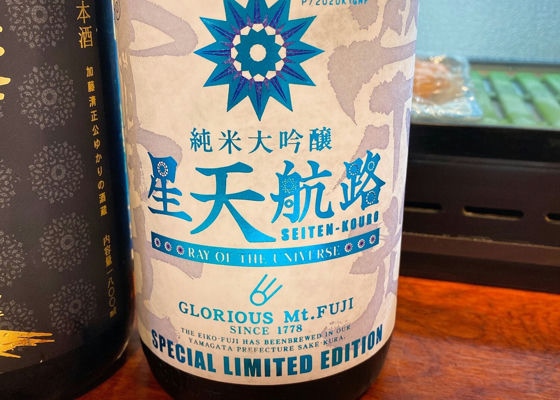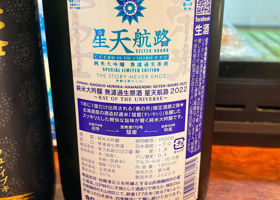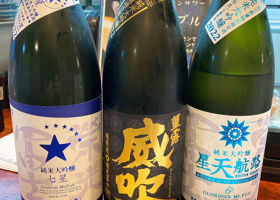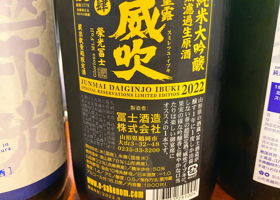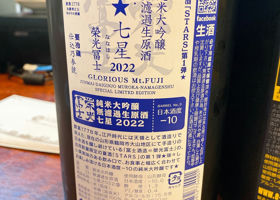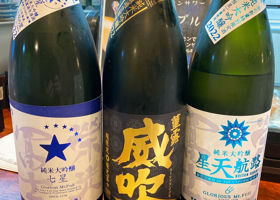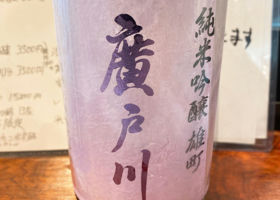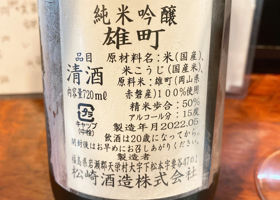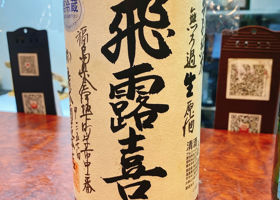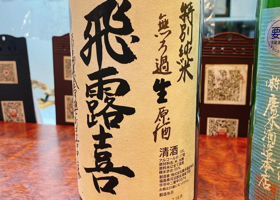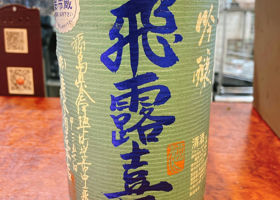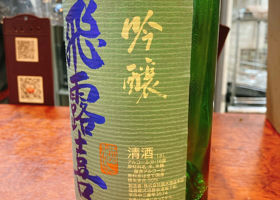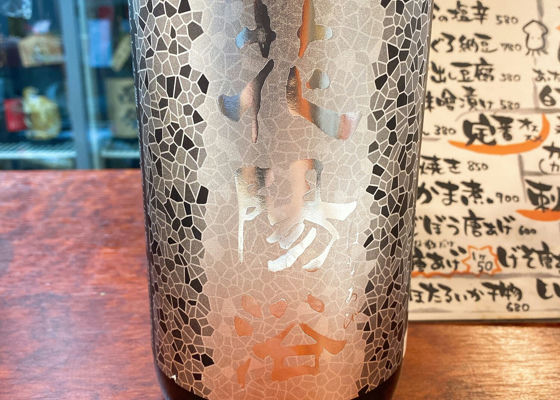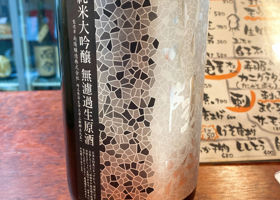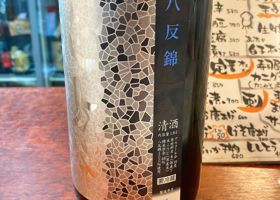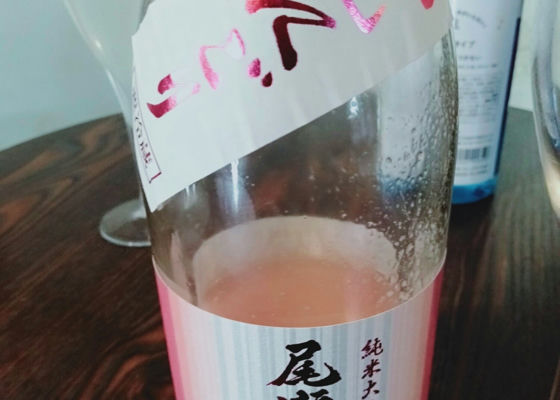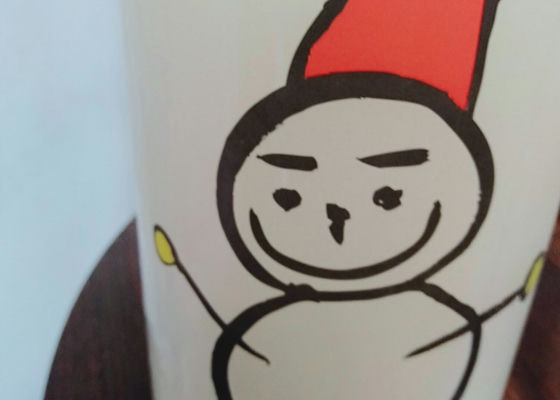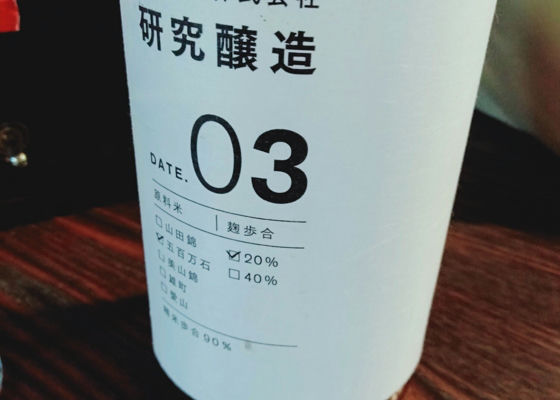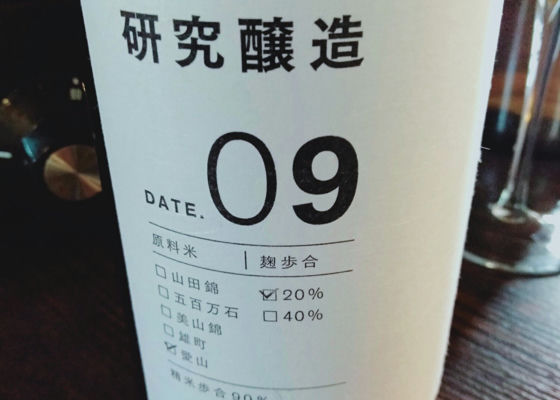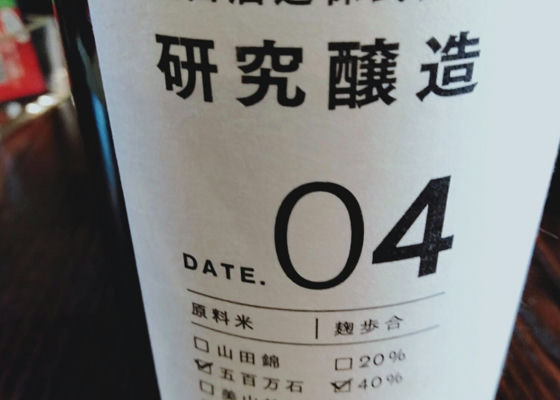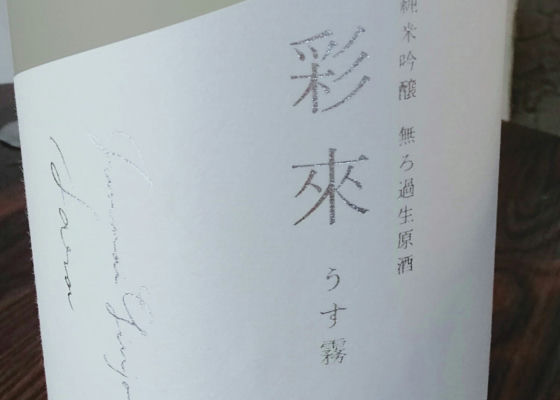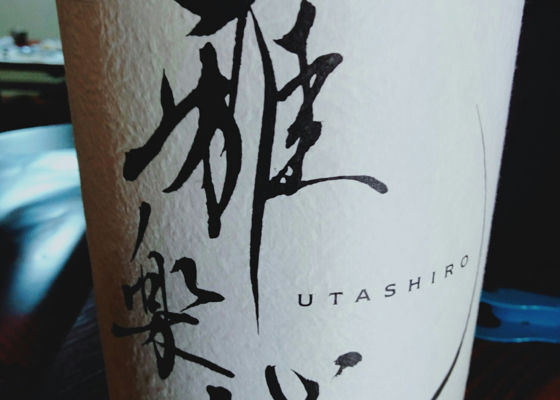Timeline
やす☆This is the first Enochi I have ever had.
The clear, soft, muscat-like sweetness and flavor is very typical of the sake. Personally, I would like a little more sharpness. やす☆The aroma is subdued and the mouthfeel is clear. Refreshing acidity spreads and is crisp and clean. The taste is just like the label on the back. やす☆Finally, the first production.
Shrewd and crisp with acidity; although 2018BY, no sense of maturity, low al, cider-like. やす☆Three kinds of Eiko-Fuji were compared. Although the sake degree was -7, it was the crispest of the three. やす☆Eiko-Fuji 3 kinds of drinking comparison. The fresh acidity from the clean mouthfeel is impressive. やす☆Eiko-Fuji: 3 kinds of wine. It has a clear, sweet and juicy taste. It was the sweetest of the three, with a sake degree of -10. やす☆It has a soft umami flavor and a clean, clear taste. Stable Hirotogawa. やす☆Comparing Tobiroki. It is sweeter than the Ginjo, and gives the impression of being able to fully enjoy the characteristics of Tobiroki. やす☆Comparing Tobiroki. It has a sweet and savory taste that is typical of aluzoe. やす☆Fresh, sweet and juicy. The taste is just as I imagined. kawausoThe bright pink is eye-catching! No coloring agents are used and the only ingredients are rice, koji and water. The secret of the color is sake yeast.
In rare cases, sake yeast is naturally mutated to produce a red color. By cultivating these mutant strains and using them in sake brewing, bright pink sake is produced.
Because the yeast is still alive, the sake has a gassy, sizzling taste. kawausoProducer: Fukuchidai Sake Brewery
Place of production Saga Prefecture
Ingredients Rice, rice malt, brewing alcohol
Rice polishing ratio 60
Alcohol content 15 kawausoRice polishing ratio: Koji rice 50%, Kake rice 60%.
Alcohol: 13 degrees (unpasteurized)
Sake degree: ---.
Acidity: ---
Yeast: --- (Japanese)
Sales Period: From Nov.
We have improved the fineness of the sake by double straining the sake through a colander during the up-tank process while covering the entire body with unrefined sake. This will definitely give it more dignity and delicacy than last year's product. In order to achieve a silky mouthfeel, we strain the unrefined sake several times, resulting in a silky smoothness with a rich sweetness like wasanbon. Currently, each bottle is bottled by hand and is undergoing secondary fermentation in the bottle. It is gradually becoming more and more fizzy. 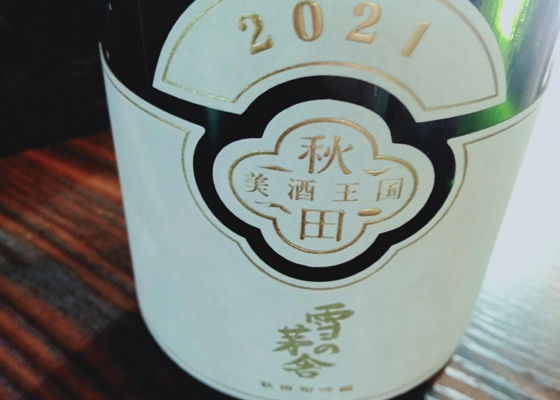
kawausoSaiya Shuzo is a unique sake brewery that brews sake using a technique called "San-nai-zukuri," which uses local spring water from the Ishibaki spring and its own yeast. We look forward to seeing the quality of their sake in the future.
The "Nobori-gura" is a sake brewing process that takes advantage of an environment where the sake brewery is located on the slope of a mountain and the rice mill is at the top, so the sake rice is made to climb up and then descend to the bottom where it is bottled and shipped.
The brewery is located on a mountain slope less than 200ml from the river (Koyoshigawa) within 3km of the sea on the Sea of Japan side in the middle of Akita, and brews with spring water from the local Ishinawaki area, which is rich in melted snow.
The brewery brews with spring water from the local Ishiwaki area.
The term "sanai-zukuri" refers to a group of toji (master brewers) in the Sanai region of Akita, now the city of Yokote in Akita Prefecture, known as the Sanai Toji. The Toji of Saiya Shuzo is Toichi Takahashi, who is also a member of the Toji of Yamauchi, and the name "Sanai Zukuri" is derived from the words Yamauchi and San-nai. This is a unique technique in which "no oar insertion, no filtration, and no water splitting" are used. kawausoThe first of its kind in Tsuchida
We have prepared the rice of "Yamadanishiki, Gohyakumangoku, Miyamanishiki, Aizan and Omachi".
sake rice.
The contents of research are
What is the taste of rice?
What is the taste of rice? ・Polishing ratio 90% to bring out the taste of rice.
5 varieties of sake rice were used to study whether the taste really changes depending on the type of rice.
Research the difference in taste between 20% (light) and 40% (dark) koji ratio.
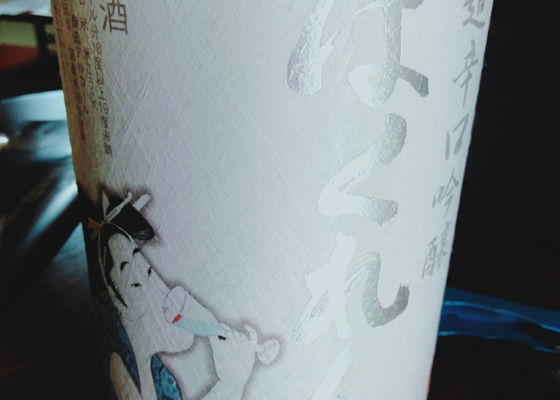
kawausoThis is a seasonal limited edition of the very popular super dry Ginjo "Bakuren", which is released every year in early autumn. There are three versions of "Bakuren": red, which is sold all year round, black, which is released as nama-shu around February every year, and this white. The specifications of each version are almost the same, but the major difference is the rice used. White Bakuren uses "Yamadaho" rice from Hyogo Prefecture.
Yamadaho is the mother of Yamada Nishiki, the king of sake rice. Yamada Nishiki was artificially bred at the Hyogo Prefectural Experiment Station in 1923, and was officially named Yamada Nishiki in 1936. Yamada-Nishiki is a sake rice that has its roots in Yamada-Nishiki, which still reigns as the best sake rice after more than 70 years.
Heat treatment conditions: Raw (once-heated), label indicates refrigeration required
Ingredients Rice, Rice malt
Alcohol content: 18 to 19 degrees
Rice: Yamadaho
Rice polishing ratio 55
Yeast used: Ogawa No.10
Sake meter: +15 to +18
Acidity 1.2
kawausoComment from the brewer
Since the debut of Sairai, many customers have requested a "lightly nigori" version, and now we are proud to announce the release of "Usukiri".
After a Muscat-like ginjo aroma, a tropical sweetness reminiscent of tropical fruits spreads in the mouth with a sense of dynamism and faint gas that only lightly nigori can provide, and the finish is crisp with acidity.
Please enjoy the new appearance of Sai Rai.
The glucose concentration at the time of testing is 2.8%, but since the tailings are involved, we have designed it so that by the time you are ready to enjoy it, the sweetness will have increased, the corners will have been removed, and it will have a round taste. kawausoAlcohol content: 16
Rice used: Gohyakumangoku
Rice polishing ratio: Undisclosed
A light and crisp bottle brewed by Mr. Kato, who became the youngest brewer in Japan at the age of 24.
Because we want you to drink it without any preconceptions.
This is a new brand of Tenryoibai Shuzo, which does not indicate the specific name or rice polishing ratio.
RecommendedContentsSectionView.title
